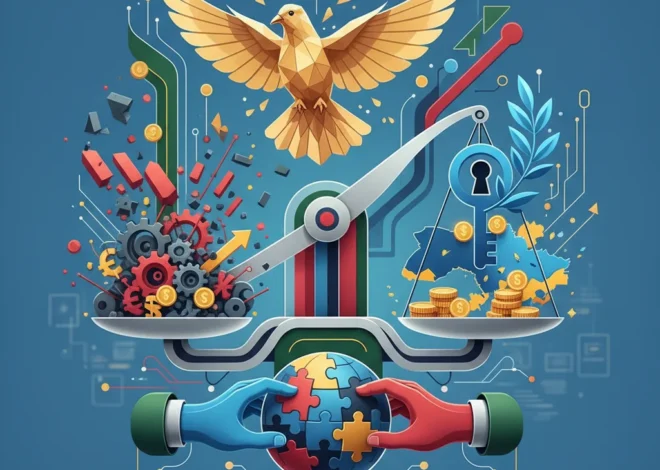
The Stockbroker’s Paradox: A 1980s Lesson on Access vs. Wisdom in Today’s Fintech World
In the fast-paced world of digital finance, where stock trades can be executed with a single tap, a recently published letter in the Financial Times serves as a powerful, and rather charming, cautionary tale. Penned by Executive Coach Jane Maitland, it recounts a brief but profound experience from her time at a US bank in the 1980s.
The bank, in a forward-thinking move for the era, launched a campaign to demystify investing for its customers, simply explaining “what a stock was.” The initiative, however, was a victim of its own success. “The bank was deluged with applications,” Maitland writes. This flood of interest forced the institution to launch a second, unplanned campaign: to explain what a stockbroker was.
This simple anecdote is more than just a nostalgic look at a bygone era of banking. It is a perfect parable for the central challenge of modern finance. We have spent the last two decades solving the first problem—explaining what a stock is and making it universally accessible. But in doing so, have we forgotten the crucial importance of the second? In a world of zero-commission trading and fractional shares, the question is no longer “What is a stockbroker?” but rather, “In the absence of a stockbroker, who provides the wisdom, guidance, and guardrails?”
The 1980s: A World of Financial Gatekeepers
To fully appreciate the bank’s predicament, one must step back into the financial landscape of the 1980s. For the average person, the stock market was an opaque and distant institution, shrouded in jargon and accessible only through a very specific kind of gatekeeper: the stockbroker. Investing wasn’t a casual hobby; it was a formal, often intimidating, process.
The ecosystem was defined by high friction:
- Exorbitant Costs: Trading commissions were staggeringly high. A single trade could cost hundreds of dollars, making frequent trading or small investments economically unviable for most. This cost barrier naturally excluded a vast portion of the population.
- Information Asymmetry: Access to real-time market data, research reports, and company fundamentals was the exclusive domain of professionals. The average person relied on the daily newspaper’s stock pages, which were already hours out of date.
- The Human Intermediary: Every transaction required a phone call to a licensed stockbroker. This individual was not just an order-taker; they were a guide, an advisor, and a filter. They explained the risks, suggested strategies, and, in many cases, served as a crucial “cooling-off” mechanism against impulsive decisions.
In this context, the bank’s campaign to simply explain the concept of a stock was revolutionary. It was a direct attempt to democratize a sliver of the financial world. The overwhelming response demonstrated a massive, untapped public appetite for participating in the economy’s growth. Yet, the follow-up problem—the need to explain the role of a broker—revealed a critical knowledge gap. The public was eager to buy, but they lacked the fundamental understanding of the process, the risks, and the strategic thinking required for successful investing.
The Fintech Revolution: Tearing Down the Gates for Good
The journey from the 1980s to today has been one of relentless gate-crashing, driven by technological innovation. The rise of online brokerages like E*TRADE in the late 90s was the first major quake, slashing commissions and putting basic trading tools on home computers. But the last decade’s fintech boom represents a seismic shift of an entirely different magnitude.
Mobile-first platforms have completely redefined market access. This “democratization of finance” is built on several key pillars of financial technology:
- Zero-Commission Trading: The new industry standard, removing the primary cost barrier for small investors.
- Fractional Shares: Allowing individuals to invest in high-priced stocks with as little as one dollar.
- Intuitive User Interfaces: Transforming the complex act of trading into a simple, slick, and sometimes game-like mobile experience.
The impact has been staggering. Retail investor participation in the stock market has surged. In the first half of 2021 alone, an estimated 15 million new brokerage accounts were opened in the U.S., a testament to the power of this new accessibility. The economy of investing has been fundamentally rewired.
Ghosts of Economic Past: Why a 1970s Socialist Blueprint Still Haunts Modern Finance
Investing Then vs. Now: A Comparative Look
The contrast between the two eras highlights not just progress, but also the emergence of new and subtle risks. The structural guardrails of the past have been replaced by digital immediacy.
| Feature | 1980s (The Stockbroker Era) | Today (The Fintech Era) |
|---|---|---|
| Access Point | Licensed stockbroker via phone call | Smartphone app, website |
| Typical Cost | $50 – $200+ per trade | $0 commission on most stock trades |
| Information Source | Broker, Wall Street Journal, annual reports | Real-time data feeds, social media, news alerts, “fin-fluencers” |
| Guidance Model | Mandatory human interaction and advice | Optional (robo-advisors, educational articles, or none at all) |
| Trading Speed | Hours or days to set up and execute | Instantaneous, 24/7 market access |
| Primary Risk | High costs, poor advice from a single broker | Emotional/impulsive trading, information overload, “gamification” |
The Modern Dilemma: Access Without Acumen
This brings us back to the core of the 1980s bank’s problem, now magnified a thousand-fold. The issue is no longer a deluge of applications in a bank lobby, but millions of investors navigating a volatile stock market with unprecedented ease and often minimal guidance. The new campaign we need isn’t about “what a stockbroker is,” but about “what a sound investment strategy is.”
The very features that make fintech platforms so appealing can also encourage problematic behaviors. The “gamification” of investing—using design elements like digital confetti, leaderboards, and push notifications—can transform a long-term financial discipline into a short-term, high-dopamine game. According to a study by the North American Securities Administrators Association (NASAA), these features can prompt users to engage in more frequent, and therefore riskier, trading behaviors.
This environment provided fertile ground for the rise of “meme stocks,” where social media hype, rather than economic fundamentals, drives massive price swings. While empowering for some, this phenomenon also underscores the danger of a market where access to trading is universal but an understanding of valuation, risk, and economics is not.
The UK's £30 Billion Question: Why Labour’s Tax U-Turn Changes Everything for Investors
The Search for the New “Stockbroker”
If the traditional human broker is no longer the default guide, what has taken its place? The modern investor navigates a fragmented ecosystem of new influencers and technologies, each with its own benefits and drawbacks.
- Robo-Advisors: These automated platforms use algorithms to build and manage diversified, low-cost portfolios based on an investor’s goals and risk tolerance. They are the most direct technological replacement for the portfolio management function of a traditional advisor, offering a disciplined, hands-off approach to long-term investing.
- Financial Influencers (“Fin-fluencers”): A growing number of investors, particularly younger ones, turn to social media platforms like TikTok, YouTube, and X for financial advice. While some provide valuable education, many are unregulated, unqualified, and may be promoting speculative assets for their own financial gain.
- In-App Education: Recognizing the knowledge gap, many fintech platforms are investing heavily in educational content, from articles and tutorials to market analysis. The challenge is making this content as engaging as the trading function itself.
- Blockchain and DeFi: The next frontier of financial technology, blockchain, offers even more direct access to a wider range of digital assets. However, this world of crypto and decentralized finance (DeFi) introduces a far greater degree of complexity and risk, amplifying the need for sophisticated understanding.
Conclusion: The Enduring Need for Financial Wisdom
Jane Maitland’s letter from the 1980s is a timeless lesson wrapped in a simple story. It reminds us that providing access to financial tools is only half the equation. The other, more difficult half is instilling the wisdom to use those tools effectively. The challenge has evolved from explaining the “what” (a stock) and the “who” (a stockbroker) to explaining the “how” and the “why” of disciplined, long-term investing.
The fintech revolution has been a net positive for the world, breaking down barriers and empowering millions to participate in the growth of the global economy. But its work is not done. The ultimate success of this financial technology movement will not be measured by the number of new trading accounts opened, but by its ability to foster a generation of informed, patient, and truly empowered investors. The industry’s next great campaign must be to explain not just the mechanics of a trade, but the mindset of an investor.


